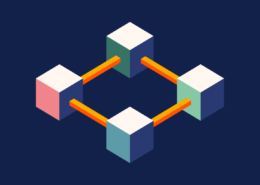Yes, Data Structures and Algorithms (DSA) remain highly relevant for software developers aiming to join MAANG (Meta, Apple, Amazon, Netflix, Google) companies. Mastery of DSA is crucial because it demonstrates a developer’s ability to write efficient, optimized, and scalable code, which is vital forRead more
Yes, Data Structures and Algorithms (DSA) remain highly relevant for software developers aiming to join MAANG (Meta, Apple, Amazon, Netflix, Google) companies. Mastery of DSA is crucial because it demonstrates a developer’s ability to write efficient, optimized, and scalable code, which is vital for the large-scale systems and applications these companies manage.
Important Points:
- Problem-Solving Skills: Understanding DSA helps in developing strong problem-solving abilities, allowing developers to tackle complex coding challenges efficiently.
- Coding Interviews: MAANG companies heavily focus on DSA during their technical interviews. Familiarity with DSA concepts is essential for success in these rigorous interview processes.
- Efficiency: Efficient data handling and algorithm implementation are key to creating performant applications, which is critical for the high-traffic systems at MAANG companies.
Important Topics:
- Data Structures: Arrays, Linked Lists, Stacks, Queues, Hash Tables, Trees, Graphs.
- Algorithms: Sorting, Searching, Dynamic Programming, Greedy Algorithms, Graph Algorithms (BFS, DFS), Recursion
Platforms to Learn and Practice:
- Online Courses: Coursera, Udemy, edX offer comprehensive courses on DSA.
- Interactive Platforms: LeetCode, HackerRank, and CodeSignal are excellent for practicing coding problems.
- Books: “Introduction to Algorithms” by Cormen, Leiserson, Rivest, and Stein (CLRS), and “Data Structures and Algorithm Analysis” by Mark Allen Weiss.
Staying proficient in DSA is not just about passing interviews but also about becoming a better, more efficient programmer capable of building robust systems.
See less

Imagine you're a chef in a busy kitchen. Every day, you face new challenges: - Ingredients change (e.g., a shipment of fresh vegetables arrives) - Customer preferences shift (e.g., a new diet trend emerges) To succeed, you must adapt your recipes and cooking techniques on the fly. You can't start frRead more
Imagine you’re a chef in a busy kitchen. Every day, you face new challenges:
– Ingredients change (e.g., a shipment of fresh vegetables arrives)
– Customer preferences shift (e.g., a new diet trend emerges)
To succeed, you must adapt your recipes and cooking techniques on the fly. You can’t start from scratch each time; instead, you:
– Build upon existing recipes (transfer learning)
– Adjust seasonings and ingredients based on what works and what doesn’t (online learning)
– Experiment strategically to create new dishes that appeal to changing tastes (adaptive exploration)
This process allows you to innovate and improve your cooking without constantly reinventing the wheel.
Similarly, Reinforcement Learning (RL) algorithms face dynamic environments and use these techniques to adapt and improve:
– Online learning: updating strategies based on new interactions
– Transfer learning: applying knowledge from past experiences to new situations
– Adaptive exploration: balancing exploration and exploitation to optimize performance
By adopting these techniques, RL algorithms can thrive in unpredictable environments, just like our adaptable chef!

See less